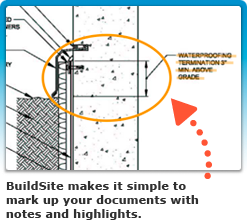Significance and Use
5.1 This practice discusses applicable ASTM test methods used in the determination of the VOC content of paints and related coatings and provides equations for calculating the VOC content expressed as the mass of VOC: (1) per unit volume of coating less water and exempt volatile compounds, and (2) per unit volume of coating solids and (3) per unit mass of coating solids.
5.2 Volatile organic compound content is used to compare the amount of VOC released from different coatings used for the same application, that is, to coat the same area to the same dry film thickness (assuming the same application efficiency).
5.3 VOC content data are required by various regulatory agencies.
5.4 Only the expression of VOC content as a function of the volume of coating solids gives a linear measure of the difference in VOC released from different coatings used for the same application.
Note 4—Thus assuming the same transfer efficiency, a coating with VOC content of 3 lb of VOC/gal of solids would release 1/2 the VOC that would a coating with 6 lb of VOC/gal of solids.
5.5 When VOC content is expressed as a function of the volume of coating less water and exempt solvents, the values obtained do not account for differences in the volume solids content of the coatings being compared: this expression, therefore, does not provide a linear measure of the difference in VOC emitted from different coatings used for the same application.
Note 5—Thus, a coating with VOC content of 3 lb of VOC/gal less water and exempt volatile compounds would release about 85 % less VOC than a coating with 6 lb of VOC/gal less water and exempt volatile compounds.
1. Scope
1.1 This practice measures the volatile organic compound (VOC) content of solventborne and waterborne paints and related coatings as determined from the quantity of material released from a sample under specified bake conditions and subtracting exempt volatile compounds and water if present.
Note 1—The regulatory definition, under the control of the U.S. EPA, can change. To ensure currency, contact the local air pollution control agency.
1.2 This practice provides a guide to the selection of appropriate ASTM test methods for the determination of VOC content.
1.3 Certain organic compounds that may be released under the specified bake conditions are not counted toward coating VOC content because they do not participate appreciably in atmospheric photochemical reactions. Such negligibly photochemically reactive compounds are referred to, as exempt volatile compounds in this practice.
Note 2—Information on the US EPA definition of VOC and a list of the current US EPA approved exempt volatile compounds which have been used in coatings, are provided in Appendix X3.
1.4 VOC content is calculated as a function of (1) the volume of coating less water and exempt volatile compounds, and (2) the volume of coating solids, and (3) the weight of coating solids.
1.5 The values stated in SI units are to be regarded as standard.
1.6 This standard does not purport to address all of the safety concerns, if any, associated with its use. It is the responsibility of the user of this standard to establish appropriate safety and health practices and determine the applicability of regulatory limitations prior to use.
Reproduced, with permission, from the ASTM International website, copyright ASTM International, 100 Barr Harbor Drive, West Conshohocken, PA 19428. To purchase the complete standard, go to http://www.astm.org/.



